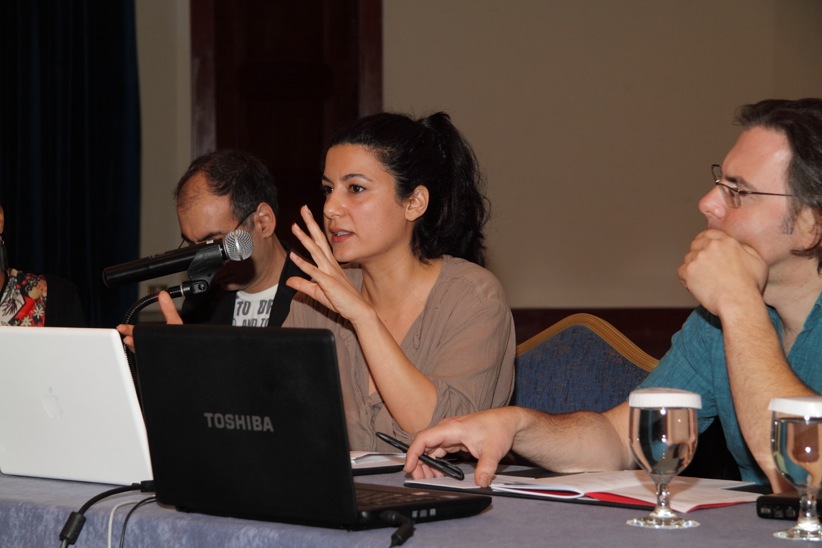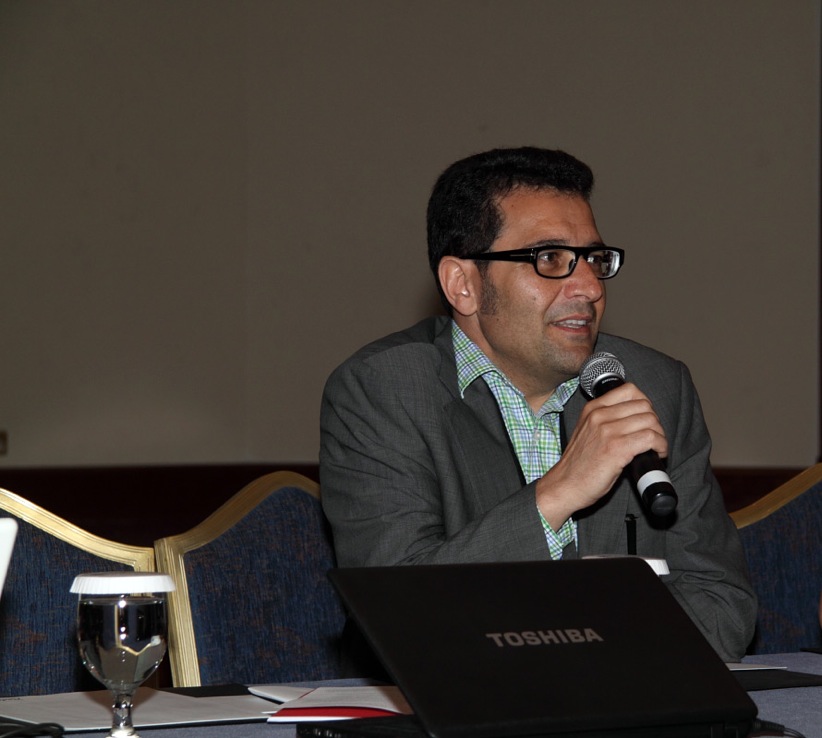
From Sharjah to Dubai and Back Again (part 1) March Meeting 2011
The past few months the Middle East and North Africa – or MENA as politicians and lobbyists like to label “the region” – have made headline news of revolutionary calibre. This has dominated our TV screens, twitter feeds – and yes – our imagination. An interesting time thus, to experience a week of art extravaganza in the U.A.E., think about matters of representation, catch up with artists and practitioners from the region, talk about politics, and consider money flows.
The Sharjah Art Foundation’s conference March Meeting (13-15 March) preceded the 10th Sharjah Biennial – to be reviewed in the print edition of Metropolis M, and the 5th edition of Art Dubai , the largest art fair in the region. Inaugurated in 2008, the March Meeting program of meetings, institutional and project presentations was created to provide a platform to exchange ideas and foster collaborations between art workers across the Arab world and beyond. In a region where inter-regional travel – read mobility – is not a given because of visa and other travel restrictions, and where institutions and artists have a tendency to look elsewhere first before looking towards their geographic neighbours, a project aiming to connect practitioners definitely plays an important role.

Though heavy on institutional presentations and initiatives, previous editions included workshops, parallel sessions, keynotes and other get-togethers. This was unfortunately not the case this year. If anything, the selection, based on an open-call for yet-to-be realised projects, seemed arbitrary in the best case, calculated in the worst case. Held at the Habiba Hall of the Radisson Blu, the whole event felt unnecessarily formal, and at times even scripted. Moderators were eager to keep the time in check, but rarely directed the discussion into interesting avenues, or even cut relevant debates short.
Director of the Sharjah Art Foundation and Artistic Director of the Sharjah Biennial Jack Persekian writes in his introduction to the program that this year the March Meeting “has extended an invitation to cultural funding bodies and government officials to share with us their ideas and plans for the future…[re]markably few funders acted on our invitation.” One can always wonder at the strategic underpinnings of inviting partner foundations whose powerpoint presentations replicate their website mission statements, no matter what visionary work they might do. One can also wonder why Christa Meindersma, the new director of the Prince Claus Fund was not notified in due time of her presentation with Jack Persekian on – as became apparent – a still very embryonic joint project. Or why organizers decided to offer projects which seemed flawed at the onset, such as Georges H Rabbath’s Lebanese Pavilion for the Venice Biennial, a stage. Lebanon, so it seems, will for reasons still murky and unclear, not participate in Venice this year. In effect, it often seemed that the “Why”, and “for Whom” questions remained largely unanswered at this March Meeting.

Nevertheless, a few memorable initiatives did emerge during the first two days. Writer and curator Stephen Wright raised much-needed “WH” questions with his project “Extraterritorial Reciprocity/Mediterranean Conceptual Art?”. Countering the oft-used idea that contemporary art in the larger Mediterranean (MENA region) is largely an import from western university campuses, Wright asked whether there was such a thing as conceptual art in the Mediterranean in the 1960s and 1970s, and if so, in which domains it is to be situated. Within this context, how can it be moved beyond the territorial? Who were the actors doing the ground work for established contemporary artists such as Walid Raad, Khalil Rabah, Walid Sadek and Yto Barrada?
Also Algerian artists Zineb Sedira and Amina Menia dug into the past with their image preservation project about Algerian photojournalist Mohamed Kouaci. Kouaci was the only Algerian photographer to have documented the Algerian revolution. His visual legacy has been largely forgotten, and with the aid of Kouaci’s widow, Sedira and Menia have taken it upon themselves to restore and archive his work. In addition, Sedira is preparing a video installation, based on the material.

Literal echoes from the past, returning to the present were to be found in Rijin Sahakian’s Echo (Sadda) Foundation for Contemporary Iraqi Art, which aims to support, document and strengthen Iraqi arts practices in both Iraq and the diaspora through a web platform. Currently operating from Amman, Echo addresses the dearth of resources available on contemporary Iraqi art, and provides online education for aspiring Iraqi filmmakers through the Iraq Film Institute. Sahakian is also involved in the Iraqi Pavilion at the 2011 Venice Biennial. This will be Iraq’s first participation since 1976.
Parallel to the Sharjah March Meeting, neighbouring Dubai inaugurated its month of art with a flurry of gallery openings. The Dubai International and Financial Centre (DIFC), partner of Art Dubai, has over the past year become home to six galleries. More to follow in part 2 of this report.
Travel to the U.A.E. has been kindly supported by Fonds BKVB.
Nat Muller


